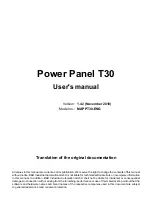
Lucent Technologies Lineage
®
2000 ECS Battery Plant J85500D-3
3 - 4 Engineering, Planning and Ordering
Issue 5 January 1999
7. Minimum cell voltage at end of discharge: ____ volts
8. Is boost or equalize charging recommended? ____ (yes or
no; boost or equalize charging is not recommended for the
Lucent Technologies VR Series battery)
If “yes”, the maximum recharging voltage per cell: ____
volts
9. Maximum initial charging voltage per cell: ____ volts
10. Number of cells per string: ____
Multiply the number of cells per string (10) by the voltages
(6),(7) and (8) to find the values for (11), (12) and (13),
respectively.
11. Float voltage per string: _____ volts
12. Minimum string voltage at end of discharge: ____ volts
13. Maximum charging voltage per string: ____ volts
Compare these three calculated voltages, (11), (12) and (13),
against the steady-state load equipment voltages (1), (2) and (3).
If (12) is a higher voltage than (2), it may be desirable to provide
the low-voltage battery disconnect/reconnect feature to prevent
battery damage from deep discharge. A more complete
comparison of battery and load voltage ranges, involving dc
voltage drops in the cabling system, is provided in the following
sections.
Load drain and
growth
Under normal conditions with a constant load, battery plant
voltage to the load equipment is essentially constant. During an
ac power outage, however, as the batteries deliver power, the
voltage drops steadily. Most types of load equipment do not
draw a constant current over their input voltage range. Therefore
the current drain on the plant may change as the batteries
discharge.
Some types of load equipment are purely resistive, in that their
current drain decreases as the plant voltage decreases. Other
types of loads are characterized as constant power equipment, in
that the current increases as the plant voltage drops. Load
















































